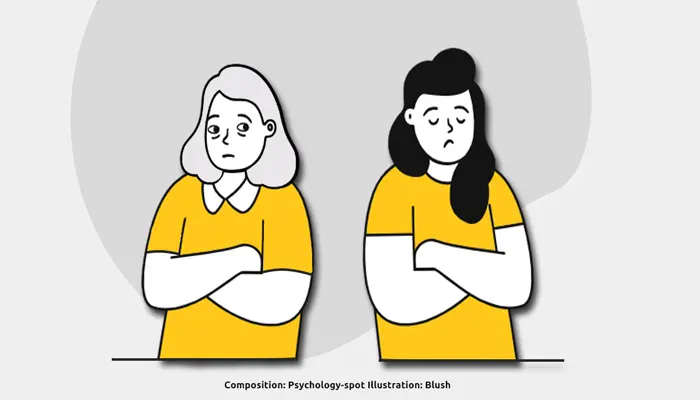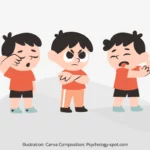
The bond between mothers and their children is one of the strongest that exists. However, over time, this relationship goes through different stages, so that if it is not properly updated and managed, with a large dose of flexibility that allows roles to be renewed, it can generate a certain amount of conflict that ends up generating an emotional distance.
What equals us also separates us
In 2016, researchers from the University of California and Stanford discovered that the mother-daughter relationship had peculiar characteristics that were not evident in other family ties.
Precisely, they verified that the volume of gray matter was quite similar in mothers and daughters in some areas related to emotions, as well as the morphology of the “emotional brain”. In practice, our emotional circuitry closely resembles that of our mothers.
However, that closeness is not a guarantee of synchronization and fluidity in relationships. Or at least not always. In fact, these similarities may be the reason why the relationship between mothers and daughters is one of the most complex, difficult and delicate to manage. It is no coincidence that many adults are capable of assertively solving conflicts with others, but they are left without psychological tools to deal with disagreements with their mothers.
The relationship between mother and daughter is based on ambivalence; That is to say, it combines contradictory needs and feelings since it is marked by a high emotional intensity in which union and attachment are manifested in unison with the need for distance and autonomy. As a result, disagreements end up being common.
Projected contents, the share of responsibility of the daughters
One of the keys to the conflict in mother-daughter relationship lies precisely in those emotional similarities. Sometimes we project our own shadows onto others. Through this defense mechanism we attribute to another person feelings, desires, impulses or beliefs that we do not recognize as our own, since accepting them would alter the image we have of ourselves.
When we perceive these projected contents in our mother’s behavior, for example, we react. That reaction is not rational, but comes from the depths of our unconscious. As a result, we can feel uncomfortable or angry and reproach her for behaviors, ideas or emotions that actually belong to us too, but we don’t want to accept them.
In this case, our mothers can act like a mirror, reflecting back to us in which we do not want to recognize ourselves. This generates an intense reaction of rejection, which is not really towards the other person, but towards the psychological content that we dislike.
Replicating the childhood relationship, the share of responsibility of mothers
The complexity of the mother-daughter relationship goes beyond projection mechanisms. On many occasions, discussions, conflicts and disagreements arise because mothers continue to replicate the same relational pattern that they used to treat their children when they were little.
That relational pattern sometimes goes through reprimands, reproaches or impositions. As a result, the children react by rebelling, as they did when they were teenagers. The fact that adults with successful lives capable of maintaining good interpersonal relationships end up feeling that their mothers drive them crazy is largely due to the fact that they have taken a journey back in time to another evolutionary stage.
Maternal behaviors can act as an emotional trigger that takes us to earlier stages of our development, at an age when we were perhaps not as assertive and confident as we are now, because we did not yet have communication and conflict resolution skills. This is a full-fledged regression that leads to repeated discussions, in a loop, on different topics, but replicating the same patterns and answers from the past.
Unresolved conflicts, responsibility of both
In many cases, the discussions and disagreements in the relationship between mothers and daughters do not come from the present but from the past, from latent conflicts. When certain problems have not been resolved in the history of the bond, they drag on and are reactivated from time to time, each time certain conditions are replicated.
For example, in situations where a daughter was forced to become a mother or suffered emotional neglect in childhood, “compensation claims” are triggered. In a certain way, one begins to claim what was not received as a daughter through reproaches.
Likewise, if the mother had to give up her dreams to face raising a child, it is likely that in the future she will also demand attention and care. That mother can continue discharge her frustration on their adult children. She may have high expectations for her “sacrifice” and if the children don’t meet them she may be disappointed and blame them.
Creating a new mother-daughter relationship
The relationship between mother and daughter should not become stagnant, but should be updated to adapt to the different stages of life and the changes in the needs of each one. It is important to reflect on that bond and understand how it conditions our lives.
Facing the reality of the relationship can be difficult, but no less necessary. The bond may not be all that the mother or daughter has hoped or dreamed of, so adjusting expectations is essential.
After all, conflicts usually arise when one or the other does not meet what is expected of them. In this case, it is convenient to approach the relationship as we would do with any other adult bond, which means accepting the “limitations” or way of being of the other person with fewer problems. It is about accepting the others as they are, without expecting them to be perfect or fit the mold we have. This prevents us from taking things so personally and can greatly improve the relationship.
Of course, it is also critical that everyone take care of her “emotional garbage.” Christiane Northrup affirmed that “The best inheritance of a mother is to have healed as a woman.” But she also wrote to the daughters that it is important “To free oneself from a heavy female heritage of dependency passed down from mother to daughter.”
We all have to accept what we received from our parents – the good and the bad, the sweet and the bitter. At the same time, parents must accept that gap between what their children are and what they would like them to be. Rejecting, fighting or wanting things to be different tends to weaken us while acceptance heals.
It is a liberating step that opens us up to life and, far from worsening the bond, it serves to strengthen it. Now from a more mature, flexible and conciliatory attitude where everyone has space to redefine their roles and expectations, feeling more comfortable in that wonderful relationship between parents and their children.
Sources:
Yamagata, B. et. Al. (2016) Female-Specific Intergenerational Transmission Patterns of the Human Corticolimbic Circuitry. The Journal of Neuroscience; 36(4): 1254-1260.
Champagne, F. A. et. Al. (2006) Maternal care associated with methylation of the estrogen receptoralpha1b promoter and estrogen receptor-alpha expression in the medial preoptic area of female offspring. Endocrinology; 147:2909 –2915.



